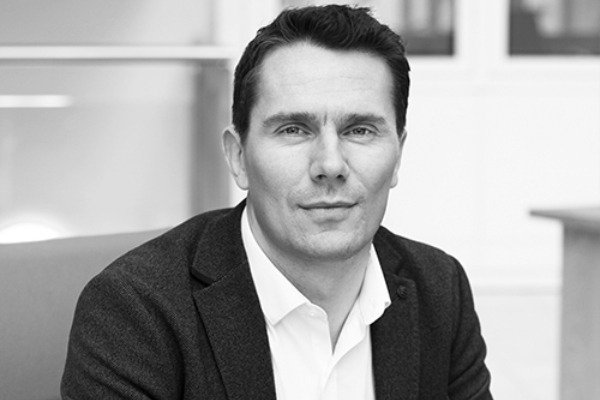I try to be relentlessly positive as a planner. At times it’s hard but it’s definitely the best way to be. My job is to help clients to turn ideas and opportunities into reality. That demands a pragmatic attitude and a mindset that sees solutions not problems.
Which is all to the good when working in Cambridge – one of the most exciting cities and property markets in the UK but also one of the most challenging. The tension between looking back and looking to the future is one everyone recognises. Protecting heritage while progressing the city, its economy, its world-leading life science industries, and providing jobs and homes for its community is a delicate balance that is heavily scrutinised and attracts a lot of interest from well-informed, highly educated individuals.
I’m picking up my pen having just secured planning consent for the redevelopment of Lockton House in the city centre for Prudential UK Real Estate and Wrenbridge. The application was for the redevelopment of a dated circa 30,000 sq ft five-storey office building off Clarendon Road to provide two new commercial office buildings of circa 100,000 sq ft designed around a central courtyard space. Being located at the interface between commercial buildings on Hills Road and the Brooklands Avenue Conservation Area – a more traditional and established residential community – it’s no surprise that some local residents did not support the proposals. But by understanding the local policy context, the opportunity, the benefits, and by establishing a trusted working relationship with the officers, we worked effectively through the planning process and we secured the consent.
Of course, there are different ways to get planning permission. Others may seek to go straight to appeal given the number of high-profile recent refusals but as I look at the potential for Cambridge’s growth over the next 2-3 decades, I can see how what we did at Lockton House will be directly relevant to so many other sites in the city.
Cambridge must grow. It’s fundamental to the national economy. Its life sciences sector is driving a lot of that commercial growth and infrastructure investments from East West Rail to the A14 upgrades are all contributing too. That’s not to even mention the housing demand and affordability conundrum.
So what am I saying? While the market for investment into Cambridge is maturing with increasing appetite from international as well as national funds, and the conversation around ‘innovation’ may be driving a desire for higher density, futuristic, or dare I say ambitious forms of development, we can’t ignore the established principles of understanding what makes a ‘consentable proposal’ or how to navigate the planning process for mutual benefit.
Having spent 15 years working on high-density schemes in London before I moved to Cambridge in 2018, I’ve been lucky to work across a wide variety of sites and schemes where densification was often actively encouraged.
In Cambridge, that ambition needs to be very carefully applied. You need to understand the policies, the city planners, the politicians, the stakeholders and have a feel for what is really important to people here. For me, securing this permission at Lockton House highlighted how my advice has evolved, maintaining the commercial edge I learnt plying my trade in London (at the time the hottest global ticket for investment in offices and homes) but applying it in a more subtle and defensible way that can stand up to the inevitable scrutiny which will come.
As Cambridge evolves, I expect it to increasingly embrace its ‘world stage’ position as a centre for commercial property investment. I do think the old and somewhat offensive suggestion that ‘Cambridge is a pretty village with some science parks’ is going to become even more absurd but I equally recognise a one-size fits all approach does not work here. Cambridge’s stunning heritage and city core is what originally put it onto the world stage and wholly merits protection. We have to be sensible and selective on where to pitch our ambition.
Cambridge is exciting, Cambridge is growing, and Cambridge needs to balance that growth and the opportunities it brings with all of the things that have made it great in the first place.
As a planner with a vested interest in the success of the city – and a desire to help many of my former national and international clients have the confidence to invest here including many for the first time – I feel I’m in a privileged position to make a significant contribution. And to do that working in a planning and design practice that has the ability to be truly independent from the local agents and the clients they serve.
Buoyed by the positive success of Lockton House, I’m looking forward to working on more schemes that balance investment and ambition with good design, placemaking and a healthy respect for their context and setting.
So let’s be positive. Can we get good growth that powers Cambridge’s economy while protecting its history? Can we achieve sustainability, quality and place? Can we build well, build in the spirit of the city, and build things to be proud of without the delay and cost of appeal.
I think we can.
I think, with intelligent planning, smart thinking and the diligent application of our skills, we can pass the test and create buildings and places that stand up to examination.
And in the right context, dense can be smart.
Lyndon Gill is a Partner at planning and design consultancy Barton Willmore
Image source- Barton Willmore
© Eastern Echo (powered by ukpropertyforums.com).
Sign up to receive your free monthly Eastern Echo newsletter here.




